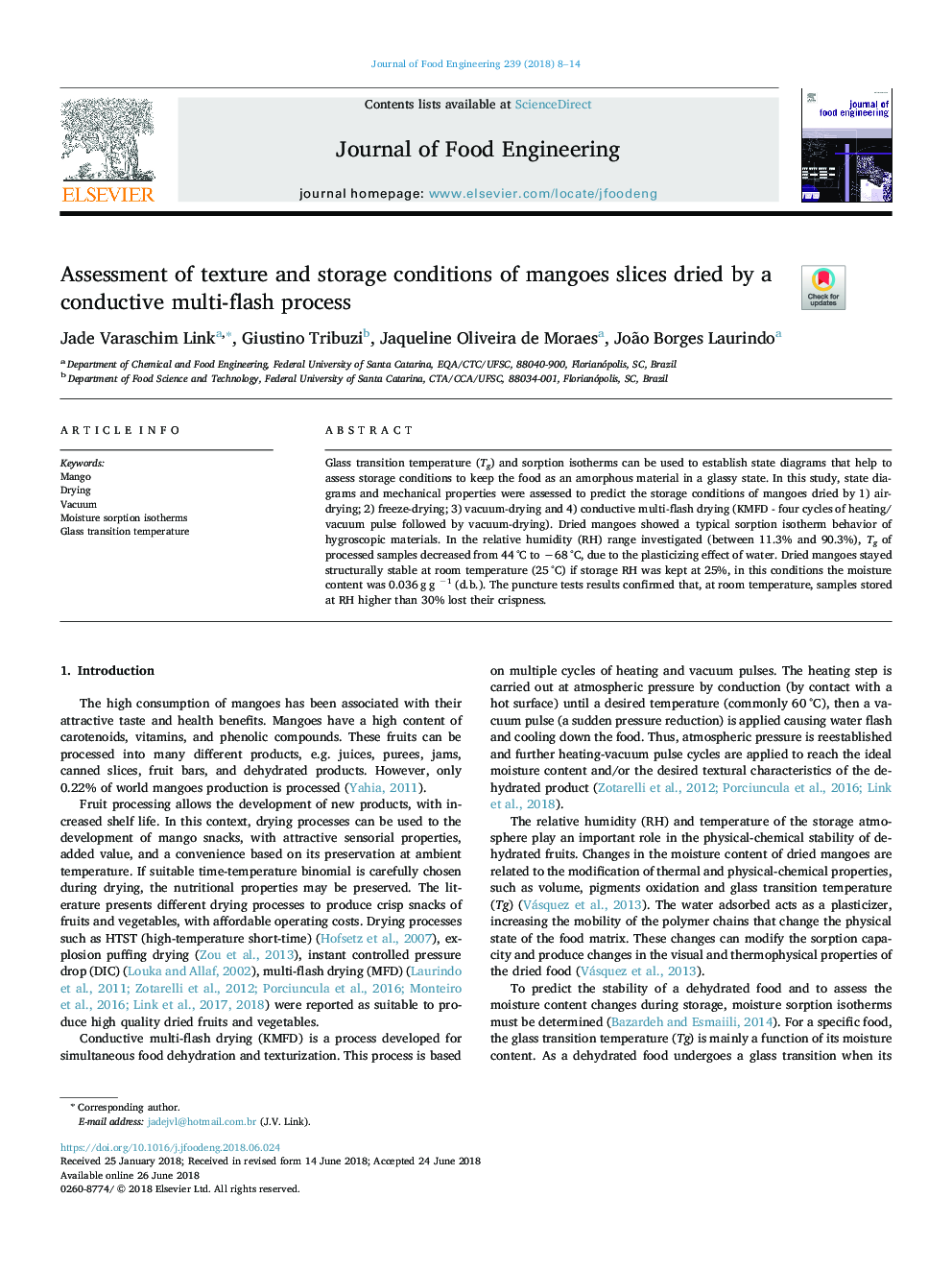| Article ID | Journal | Published Year | Pages | File Type |
|---|---|---|---|---|
| 6664373 | Journal of Food Engineering | 2018 | 7 Pages |
Abstract
Glass transition temperature (Tg) and sorption isotherms can be used to establish state diagrams that help to assess storage conditions to keep the food as an amorphous material in a glassy state. In this study, state diagrams and mechanical properties were assessed to predict the storage conditions of mangoes dried by 1) air-drying; 2) freeze-drying; 3) vacuum-drying and 4) conductive multi-flash drying (KMFD - four cycles of heating/vacuum pulse followed by vacuum-drying). Dried mangoes showed a typical sorption isotherm behavior of hygroscopic materials. In the relative humidity (RH) range investigated (between 11.3% and 90.3%), Tg of processed samples decreased from 44â¯Â°C to â68â¯Â°C, due to the plasticizing effect of water. Dried mangoes stayed structurally stable at room temperature (25â¯Â°C) if storage RH was kept at 25%, in this conditions the moisture content was 0.036â¯gâ¯g â1 (d.b.). The puncture tests results confirmed that, at room temperature, samples stored at RH higher than 30% lost their crispness.
Related Topics
Physical Sciences and Engineering
Chemical Engineering
Chemical Engineering (General)
Authors
Jade Varaschim Link, Giustino Tribuzi, Jaqueline Oliveira de Moraes, João Borges Laurindo,
